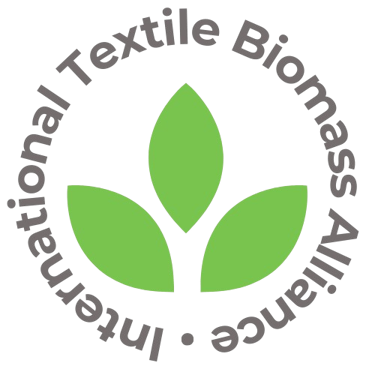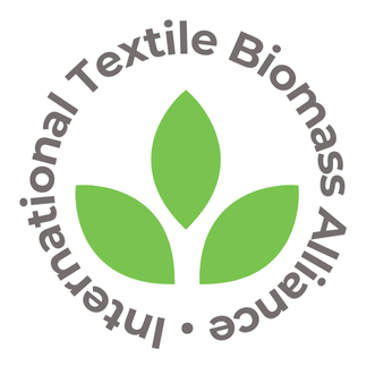Hemp: Renaissance of an Ancient Fiber for a Sustainable Future
In a world confronting an unprecedented environmental crisis, where the textile industry ranks among the planet's most polluting sectors, an ancient solution is resurfacing with striking relevance. Industrial hemp (Cannabis sativa L.), this thousand-virtue plant cultivated for over 10,000 years, emerges today as one of the most promising answers to contemporary ecological challenges.
6/4/20254 min read


Hemp: Renaissance of an Ancient Fiber for a Sustainable Future
In a world confronting an unprecedented environmental crisis, where the textile industry ranks among the planet's most polluting sectors, an ancient solution is resurfacing with striking relevance. Industrial hemp (Cannabis sativa L.), this thousand-virtue plant cultivated for over 10,000 years, emerges today as one of the most promising answers to contemporary ecological challenges.
A Plant with Exceptional Properties
Far from its psychoactive cousin, industrial hemp reveals characteristics that make it an exceptional material. Its unique chemical composition - dominated by 67 to 78% cellulose - gives it remarkable mechanical resistance, comparable to flax, with tensile strength of 3 to 7 g/denier. But it's in its functional properties that hemp reveals its full potential.
This extraordinary fiber can absorb up to 30% of its weight in moisture without feeling wet, blocks up to 95% of harmful UV rays, and possesses natural antimicrobial properties that make it resistant to mold, fungi, and bacteria. A true natural armor that maintains its freshness even in hot and humid conditions.
An Undisputed Environmental Champion
The numbers speak for themselves and reveal hemp's extraordinary environmental performance. Where cotton consumes between 9.7 and 22.5 m³ of water per kilogram of fiber, hemp requires only 2.7 to 3.4 m³. Even more impressive, its cultivation in Europe and North America requires no artificial irrigation, relying solely on natural precipitation.
Hemp's carbon footprint defies all competition: the plant absorbs 13 to 15 tons of CO₂ per hectare during growth, while its production emits only 0.6 to 1.1 tons of CO₂ per ton of fiber. The result? A significantly negative carbon balance over the entire life cycle, making hemp a true textile carbon sink.
This performance comes with exemplary agricultural production. No pesticides are needed thanks to its natural resistance to pests, and its rapid growth naturally smothers weeds, eliminating the need for herbicides. A crop so environmentally friendly that it can be easily certified organic even in conventional agriculture.
Remarkable Technical Durability
Beyond its environmental virtues, hemp shines through its exceptional longevity. After 1,000 wash cycles, where cotton loses 15 to 25% of its strength and polyester 10 to 15%, hemp weakens by only 3 to 7%. Martindale tests reveal wear resistance of 30,000 to 35,000 cycles before visible deterioration.
Even more fascinating, hemp textiles improve with use: they soften and become more comfortable over time without losing their structural integrity. This unique quality allows hemp textiles to maintain their properties for over 50 years under normal use conditions.
Multiple and Innovative Applications
Textile and Apparel
The traditional textile sector finds in hemp a choice ally for producing durable clothing, particularly suited to varied climates. Its thermal insulation capacity (conductivity of 0.040-0.045 W/m·K) and breathability make it an ideal material for all seasons.
Construction and Insulation
Hemp concrete, a mixture of hemp hurds and lime, revolutionizes thermal and acoustic insulation in buildings. Hemp-based biocomposites developed by the University of Lorraine combine lightness and mechanical resistance, rivaling certain synthetic composites.
Advanced Technical Applications
Innovation doesn't stop there. Hemp finds applications in:
Biodegradable geotextiles for erosion protection
Water filtration and purification systems
Batteries and supercapacitors with hemp-derived carbon electrodes
Paper and cardboard sector, offering a sustainable alternative to wood fibers
Industrial Sector
Hemp's robustness makes it a material of choice for ropes, canvas, and tarpaulins intended for the most demanding outdoor uses.
The Strategic Interest of a Hemp Supply Chain
Economic Advantages
Despite a production cost currently 20 to 40% higher than synthetic fibers, developing a hemp supply chain presents considerable long-term economic advantages. The high yield of 1.5 to 3 tons of fiber per hectare, combined with a short growth cycle of 100 to 120 days, allows up to two annual harvests in certain regions.
Agronomic Benefits
Hemp naturally improves soils through its deep roots (up to 3 meters) that aerate the earth and prevent erosion. Its unique phytoremediation capacity even allows decontamination of soils polluted by heavy metals, transforming degraded land into productive terrain.
Independence and Resilience
A local hemp supply chain reduces dependence on fiber and material imports, strengthening industrial sovereignty. In an unstable geopolitical context, this autonomy represents a major strategic asset.
Innovation and Employment
Developing this supply chain stimulates technological innovation and creates skilled jobs in agriculture, industrial processing, and research and development. Universities and research centers constantly develop new applications, from enzymatic treatments to plasma modifications.
Towards a Textile and Industrial Revolution
Facing the challenges of climate change and resource depletion, hemp represents much more than an alternative: it's a model of circular and regenerative production. Its renaissance is part of an ecological economy approach where performance and environmental respect no longer oppose each other.
Current obstacles - startup costs, reconstruction of industrial infrastructure, and perfectible regulatory framework - should not mask the revolutionary potential of this supply chain. Optimization of ecological transformation processes, quality standardization, and development of new varieties promise to further improve the performance of this exceptional fiber.
Hemp embodies the future of an industry reconciled with nature, where millennial tradition and technological innovation converge toward a sustainable development model. In this renaissance, each actor - farmers, industrialists, researchers, and consumers - holds a key to building a more planet-respectful textile future.
The time for hesitation is over: hemp awaits its well-deserved recognition as a pillar of a post-carbon economy, and the opportunity to build a future-oriented supply chain has never been more tangible.
Key Comparative Data
Water Consumption Comparison (m³/kg of fiber):
Hemp: 2.7-3.4
Flax: 6.4
Cotton: 9.7-22.5
Wool: 170
Carbon Footprint (kg CO₂/kg of fiber):
Hemp: -0.8 to +0.6 (carbon negative)
Polyester: 5.5 to 7.2
Polyamide: 6.0 to 9.0
Durability Performance:
Hemp fiber loss after 1,000 washes: 3-7%
Cotton fiber loss after 1,000 washes: 15-25%
Polyester fiber loss after 1,000 washes: 10-15%
Agricultural Efficiency:
Hemp yield: 1.5-3.0 tons/hectare
Cotton yield: 0.8-1.2 tons/hectare
Pesticide use: Hemp 0-0.2 kg/ha vs Cotton 2.6-5.0 kg/ha
These figures demonstrate hemp's superiority across all sustainability metrics, positioning it as the textile fiber with the lowest environmental footprint while delivering exceptional technical performance.
ITBA - AIBT
If you have any questions, please do not hesitate to contact us.
FOLLOW US
Ressources
contact@itba-aibt.org
© 2025. All rights reserved.
Help




